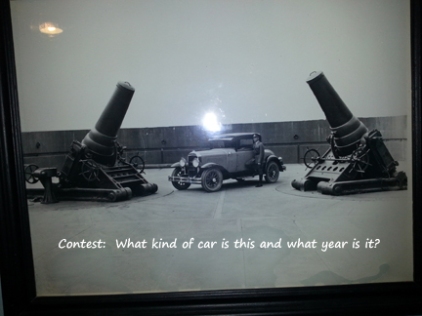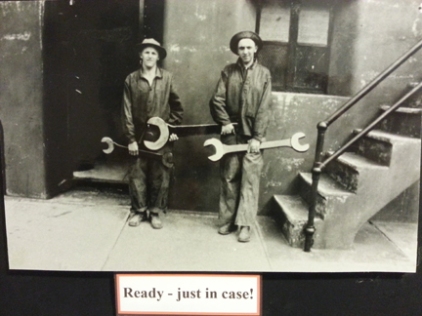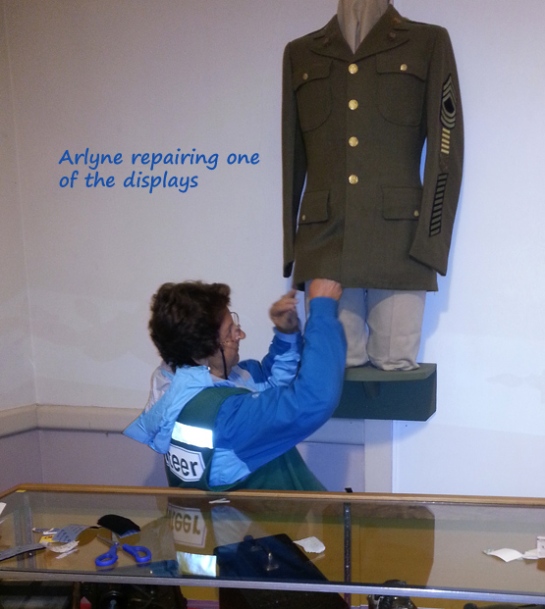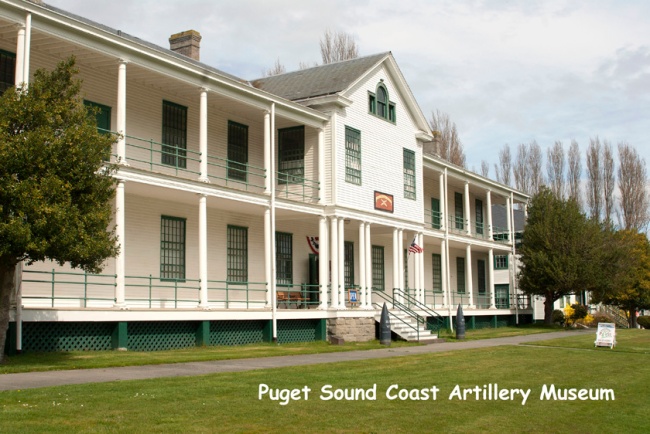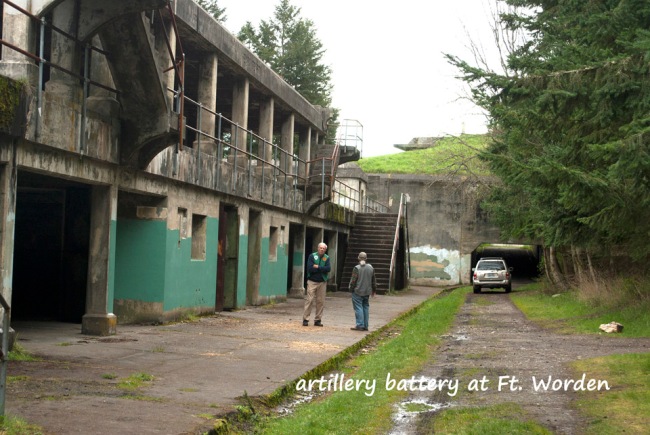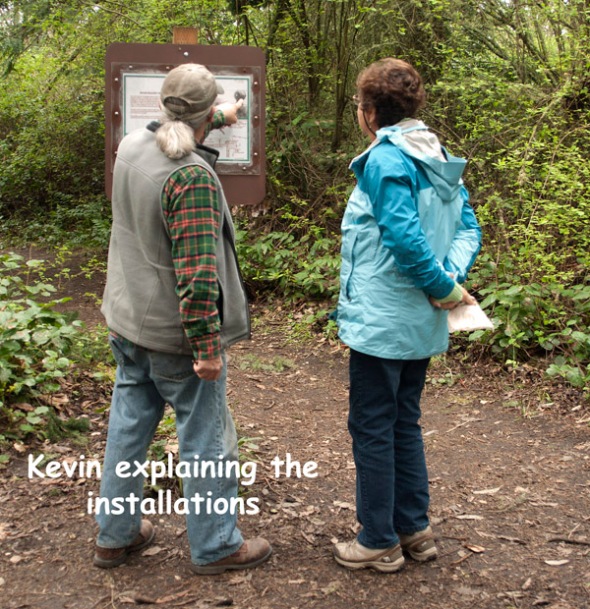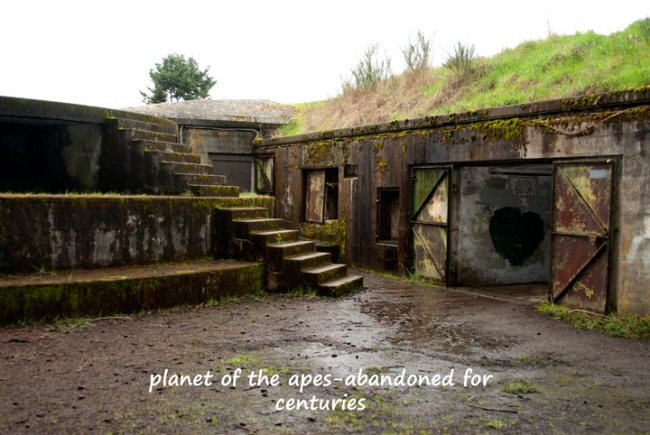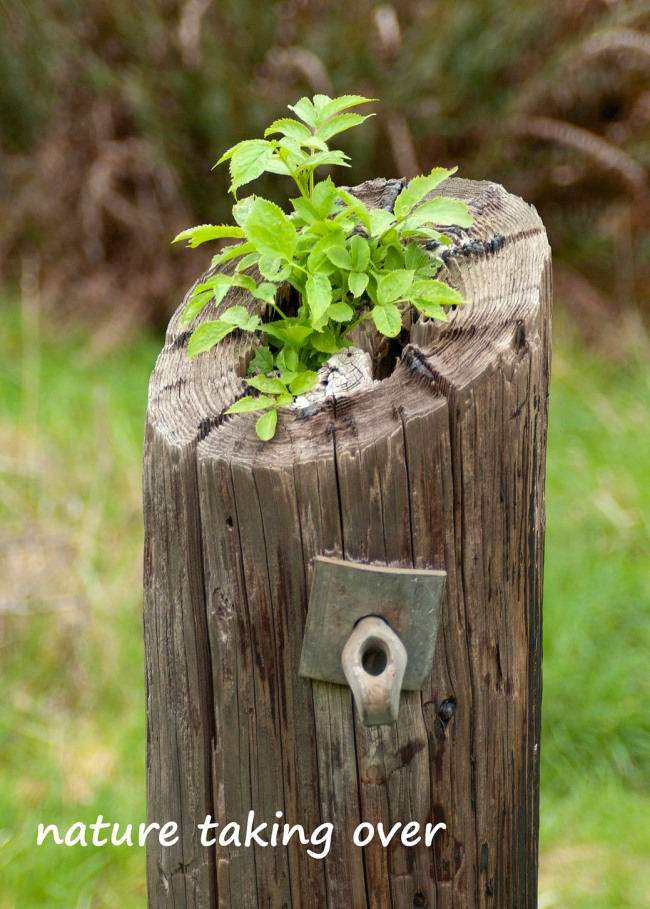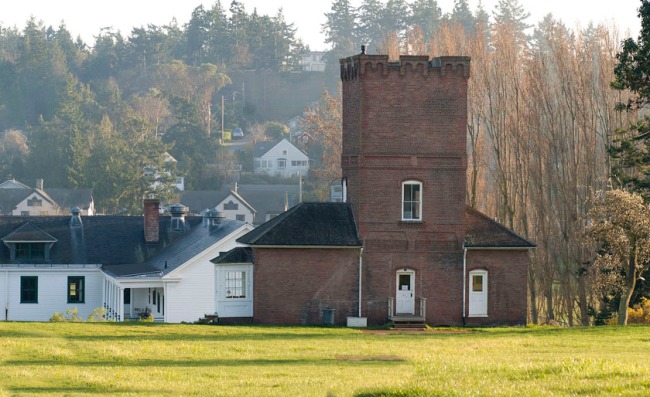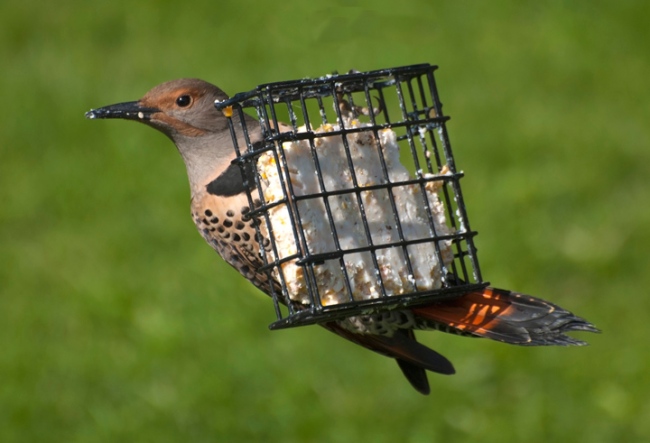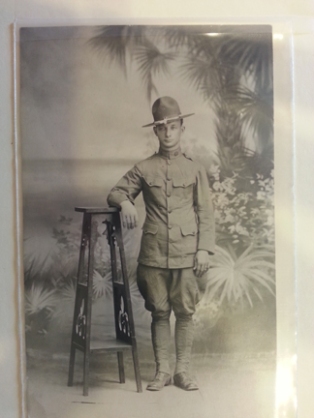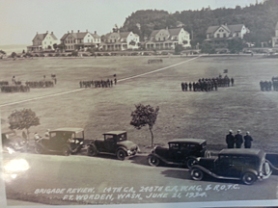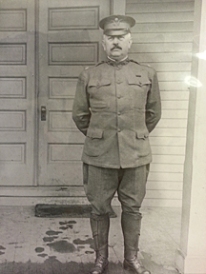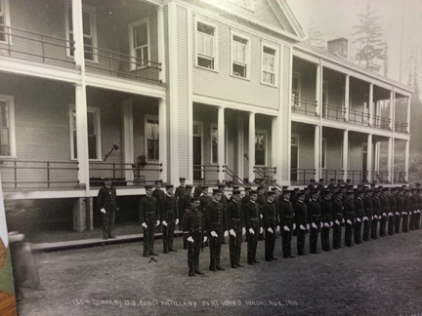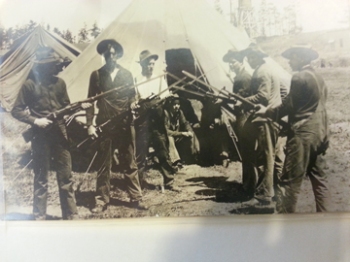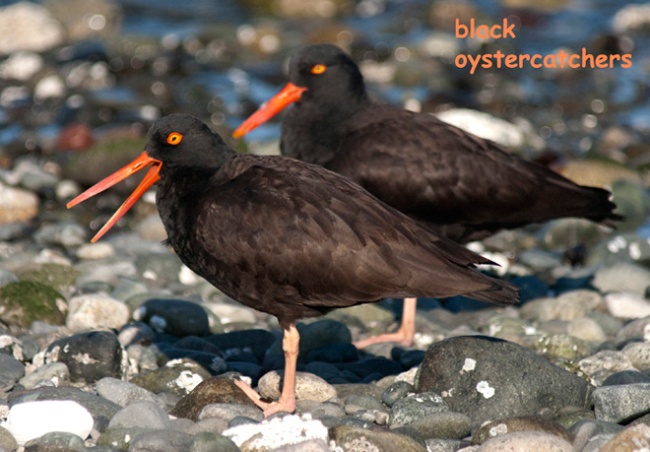Arlyne and I are well integrated into our life as volunteers for the Coast Artillery Museum (CAM). I consider Arlyne, in particular, as a senior museum volunteer (no pun intended). She’s been reading about the history of Fort Worden and the surrounding forts. She’s better at working with the public than me but I’m improving. She talked to a visitor yesterday, explaining what a bargain the Museum is at $4 per adult and how the Museum is a non-profit organization. After talking to her, he donated $10 to the Museum.
On our tour to the gun batteries on the hill overlooking the Puget Sound, we saw a beautiful eagle’s nest where a patient female (we presume) sat. The Walker Battery was closed off to visitors to avoid distracting the eagle. A few days later, however, we had a huge storm with very cold temperatures and a wind blew throughout the night that gusted over 40 mph. The next morning State Park Rangers noticed that the top 20 feet of the eagle’s tree had broken off, destroying the nest. A local native American tribal leader was notified, in case there were feathers or other important artifacts to be retrieved but there was nothing left except sticks.
A couple of days ago, Rangers spotted two young men attempting to make off with a large metal door that had washed onto the beach from an eroding cliff. The door used to be part of one of the gun batteries. This happens fairly often and usually beachgoers notify the State Rangers. But metal scrap is pretty valuable stuff these days.
We spotted two significant birds on our day off trip to Bainbridge, including an unexpected Townsend’s warbler and a mew gull (a life bird for us). We thought mew gulls would be located much furtrher to the west near the ocean. I did like the description in the bird book that says the mew gull is delicate, with a gentle expression. Check out the photo below.
With our new DVR, I recorded and later watched the Master’s Golf Tournament in HD which was super fun. I also played golf again at the Port Townsend Golf Course. It’s a nine-hole track that you play twice from different tee boxes. I haven’t done well at this course for a number of reasons; trees, thick rough, lack of practice, hills, standing water in many places and very (for me) cold, damp weather. I’m still in the 90’s but better weather is coming.
I made snickerdoodle cookies a few days ago and shared some with the Museum curator. Then I made a small cake and shared that with the Museum staff as well.
An older man and his daughter came in. He lives in California and is visiting the daughter in Seattle. He told me that he had been stationed with the Army at Fort Worden in the late 40’s. He also served in Korea and was in the Inchon landings. He and his daughter wanted to see the gun batteries on the hill but he was unable to make the hike. I went to the State Parks Office next door and sweet-talked the State of Washington into giving him a car pass and a gate key so they could drive up to the batteries. They were so happy. Alfred, the CAM curator wanted to interview him so they came back. The former soldier had several little stories about his time at Fort Worden. Our Coast Artillery Museum has a woman who comes in a few times a month and works upstairs as an oral historian. This old soldier was delighted to be able to participate by relating his personal stories. He will connect with the oral historian and another piece of history is salvaged and preserved.
A couple of days ago, the alarm went off in the Harbor Entrance Command Post, one of the emplacements on the hill above the Fort. Three of us raced up there to see what it was. I can’t imagine what three old guys were supposed to do if a rowdy gang of kids were trying to break into one of the bunkers. Turned out it was (probably) a tourist just wiggling the door to see if it was open. The bar inside the bunker was not put in right by the last staff person. At least that broke up the day.
We hear about the politics of the State Government, in this case, Washington State Parks. Fort Worden is either on the chopping block or being taken over by a private entity (for management). We don’t know what privatization will do to this Park. The state just doesn’t have enough money. Arlyne is so impressed with the huge batteries on the hill that she can’t understand how history like this can be buried, destroyed, forgotten. There are a few problems with Fort Worden, such as all the old buildings covered with lead paint, no compliance with ADA, etc. Nevertheless, the public should be outraged by the prospect of losing such a beautiful park and its history.
We always take time (if it’s not raining) to go on a birding trip. We went to Port Angeles, spotting two nice 2nd year bald eagles up close and a floating island. I’ve also included unique photos from the museum archives.
Look at the photo with the old car next to two mortars. What kind of car is it? What year is the car? Also, check out the guys with the wrenches. I’m told they were used somewhere on the gun mounts. And Arlyne fixing one of the displays. And look at the old photo of Jack London who became a famous author (some people remember his books).


